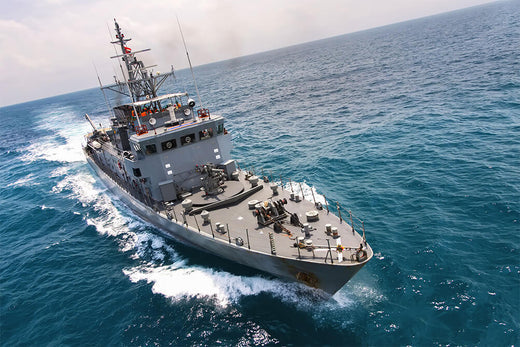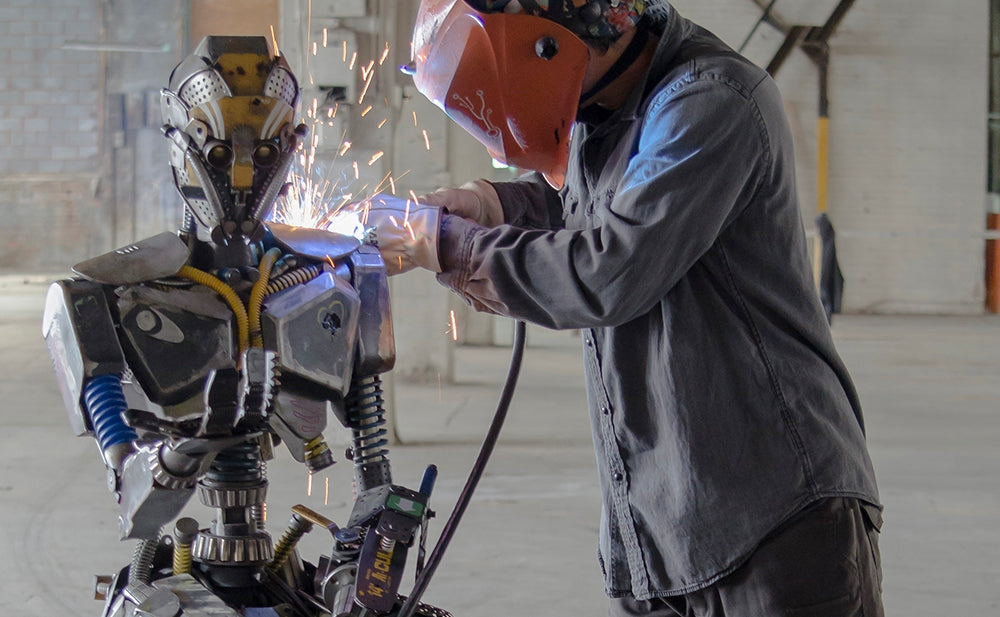
Welder/generators offer a huge advantage for anyone who works away from conventional power sources or can't access a 240-volt plug. Here, we will explore the world of Miller Bobcat welders/generators in comparison to the Lincoln Trailblazer, guide you through the various models, and help you choose the ideal machine for your industry and application.
The Miller Bobcat is one of the best-selling engine-driven machines on earth. While the Bobcat welder/generator has been a popular choice for many years, it has undergone significant updates and improvements that many welders may not be aware of. On top of that, Bobcats come in various options, each differing based on their caliber of power and the type of engine they use. Understanding these differences is crucial, as Bobcat welder/generators are built to last with proper care.

New Start/Stop Remote Control
One of the latest advancements in Bobcat technology is remote start/stop capability, allowing you to control your machine from a distance. Now you might be thinking, "is that really a big deal?" That entirely depends on how you're using your engine-driven machine. For welders working in construction or maintenance, it's a game-changer.
Many welders leave their engine-driven machines running even when not in use, leading to significant fuel and maintenance costs. By simply turning off the machine when not in use, you can save up to $1,500 per year.
And you might say, “I'll just make sure that I turn my generator off while I'm not using it.” But why waste time and energy walking back and forth to your welder-generator? It can often be more inconvenient if the welder/generator is more than 10 feet away. With remote start/stop, you can control your machine from a distance, increasing efficiency and convenience.

It should be noted that the start/stop remote won't work with every Miller Bobcat. It must be a model that is equipped with remote start/stop technology, such as the welders below:
When comparing the Miller Bobcat and Lincoln welders/generators, Lincoln's Trailblazer series offers enhanced remote control capabilities with Wireless Interface Control (WIC). This innovative technology allows you to adjust settings remotely, making it ideal for long-distance applications.
Size Vs. Power
The Bobcat series includes various models, such as the 225 and 260. These models differ primarily in their power output, with the 225 offering up to 225 amps and the 260 delivering up to 260 amps. While there's a slight weight difference between the two (485 lbs for the 225 and 501 lbs for the 260), the significant power boost makes the 260 an excellent choice for demanding applications.

The Bobcat's compact design and lightweight construction make it easy to transport, even in challenging terrain. This portability is especially beneficial for pipe welders, ranchers, and maintenance workers who need a reliable power source.
Be Vawy, Vawy Quiet
Miller has taken a page out of Elmer Fudd's book these days with its machines, focusing on making them as quiet as possible. For any welder working in construction, manufacturing, fabrication, or repairs, the quietness of the Miller welders/generators improves your job site's efficiency and overall safety.
 Older welder/generators had their engines towards the back of the machine, resulting in less efficient airflow and a whole lot of noise. The new Bobcats now have their engines rotated towards the front of the machine, making them much quieter than older and competing models.
Older welder/generators had their engines towards the back of the machine, resulting in less efficient airflow and a whole lot of noise. The new Bobcats now have their engines rotated towards the front of the machine, making them much quieter than older and competing models.
The remote start/stop feature adds convenience and reduces noise pollution. You can create a quieter work environment by easily turning your machine off when not in use. Additionally, Bobcat welder/generators are designed to operate at low noise levels, typically around 72-73 dB.
This means that you'll have more control over when and where you use your engine-driven machine. You'll be able to get started earlier during the hot summer days and go longer at night when people would usually be upset by loud noises. If you're working in commercial welding or welding near residential areas, low noise levels can often be required for certain jobs.
However, because the Bobcat does not feature the Trailblazer's Auto-Speed™ Technology, the noise of the engine will only fluctuate between full throttle or idling. If sound is a big concern for you, the Trailblazer has four different RPM levels, meaning the sound never gets louder than what is required for your power needs.

Hands-Free Starting
Starting your engine-driven machine can be a real pain, especially in cold weather. The Bobcat's hands-free starting automatically sets the proper air/fuel mixture and eliminates the need to manually engage the choke.
Extra Power
With 9,500 continuous watts (or 11,000 peak watts) of auxiliary power, the Bobcat can handle a variety of applications. Whether you're powering lights, grinders, or other tools, the Bobcat delivers the power you need to get the job done.
To GFCI or Not To GFCI
GFCI (Ground Fault Circuit Interruption) provides an added layer of safety, especially when using auxiliary power. Many Bobcat models are available with or without GFCI, depending on your specific industry and regulatory requirements. In industries like manufacturing, construction, and maintenance, GFCI protection may be mandated by OSHA. In certain regions, GFCI-equipped tools may exempt you from MSHA tool and cord testing.
A new Miller Bobcat welder/generator is a worthwhile investment that can improve both safety and productivity. These reliable machines are built to last, providing years of dependable service.
For more information on the Miller Bobcat series as well as the best place to buy on the web, check out Welding Supplies from IOC’s complete engine driven collection. Make sure you join our loyalty program as those reward points will pay off quick!








